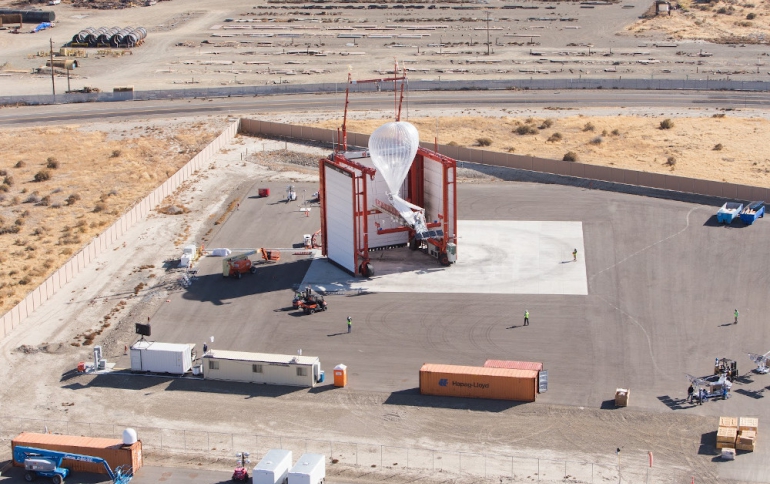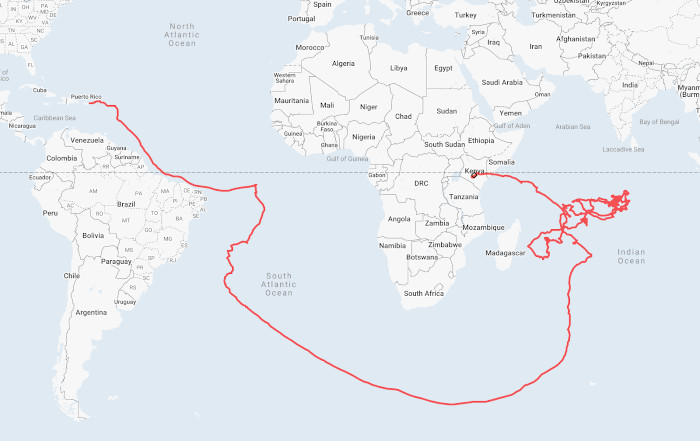
Alphabet's Loon Balloons Take Off From Puerto Rico to Reach the Kenyans
Alphabet's Loon balloons are currently drifting over Kenya performing network testing, and preparing to bring connectivity to people who subscribe to mobile service with Telkom Kenya.
The Kenyan government has recently given formal approval for Loon’s balloons to operate in the stratosphere above the country. These high altitude platforms are hovering 20km in the stratosphere where they provide Internet service.
However, equally fascinating is the journey each balloon takes to the people it connects. That's because all Loon flights begin at one of Loon's two launch sites in Puerto Rico or Nevada. The flight system is loaded onto a special cart that plugs into a launch system. The launch system has three wind walls and can be rotated so the opening where the balloon drifts out always faces downwind, ensuring the balloon is always sheltered from the elements. A custom apparatus fills the balloon with lift gas inside the launch system.
Loon's teams of onsite operators and the flight engineers work together to perform a long list of preflight checks, coordinate with air traffic control, and ensure the launch can proceed safely. The mechanical and software systems assist the team to conduct the launch process in a very repeatable and safe way. That allows Loon to both scale to a large number of launches and also to reduce process variability among those launches. This is one of the keys to ensuring the balloon flights fly for hundreds of days.
After back and forth coordination messages on Loon's launch channels, the balloon is released and ascends into the stratosphere. Once at float, Nairobi is around 11 thousand kilometers from Puerto Rico as the crow flies, but the balloons do not fly in a straight line. Instead, they fly the fastest route that drifting on the stratospheric winds allows.
To determine that route, software automation builds a map. Numerical weather forecasts are built throughout the day by weather centers around the world, and Loon assimilates the outputs of those models to create an ever-changing global estimate of how long it takes to reach our destination, Kenya, from everywhere in the stratosphere.
Loon balloons follow the map. A navigation system analyzes the winds around each balloon every minute to ensure that, compared against the map, they are always moving closer to Kenya. Over time, these small steps result in successful journeys spanning thousands of kilometers.
For example, the HBAL125 balloon launched from Puerto Rico and traveled over the Atlantic Ocean, flying southeast along the coast of Brazil. It flew south into the Southern Atlantic jet stream to quickly round the Cape of Good Hope before heading back north into the slower winds of the equatorial region. At this point, the balloon took a planned detour for Loon to collect data about the stratospheric winds over the Indian Ocean to enhance to Loon's models in the region. Finally, in coordination with the local authorities, HBAL125 flew into Kenyan airspace to begin network testing two weeks ago.

The winds aloft change every day so, like snowflakes, no two journeys will ever be exactly the same. Other balloons heading for Kenya will fly over central Africa, and still others will fly west out of Puerto Rico and reach their destination after a trans-Pacific flight. The balloons optimize for safety first, and travel time second.
In addition to assimilating winds (forecasts and real time observations) and computing efficient trajectories, Loon's fleet management system autonomously monitors the weather, reasons about how to avoid harm if an unlikely problem arises, and processes a large amount of telemetry every minute to ensure everything is working as intended.
Whan the baloons arrive in Kenya, the flights follow a choreographed "dance," again, with the fleet management system’s machine learning-driven navigation algorithms coordinating all the movements. The balloons perform a variety of maneuvers to maximize the number of people they are able to connect throughout the day. The navigation system keeps the balloons constantly moving up and down to achieve their mission.
The Loon team is bringing service to people in places that previously had little or no connectivity in Kenya.





















